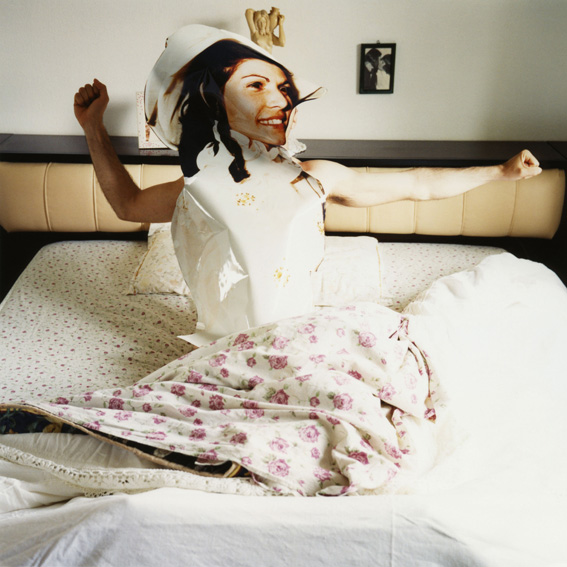
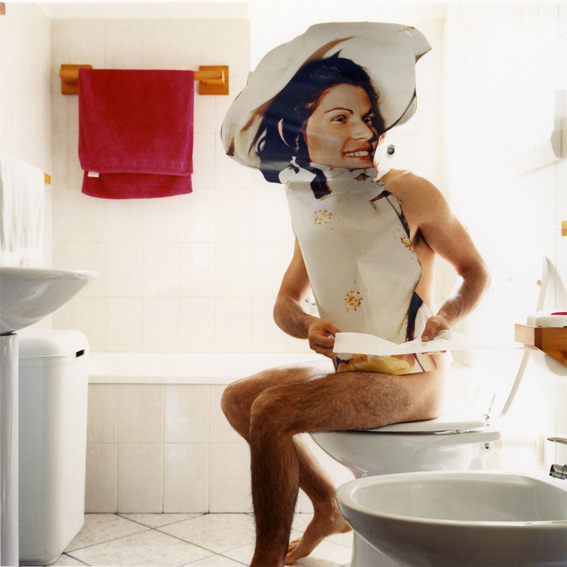
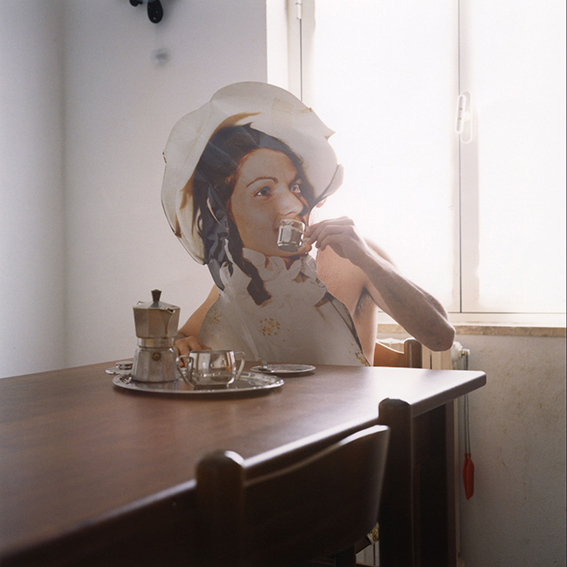
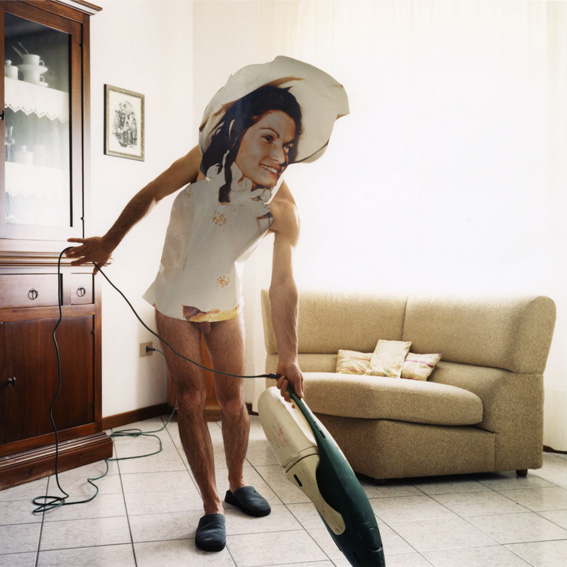
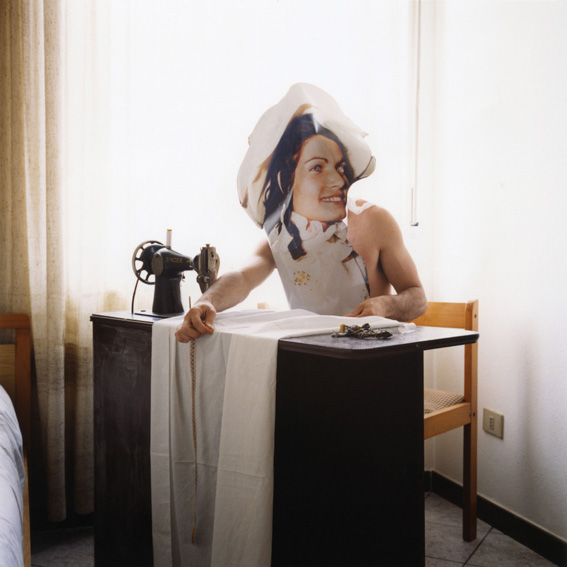
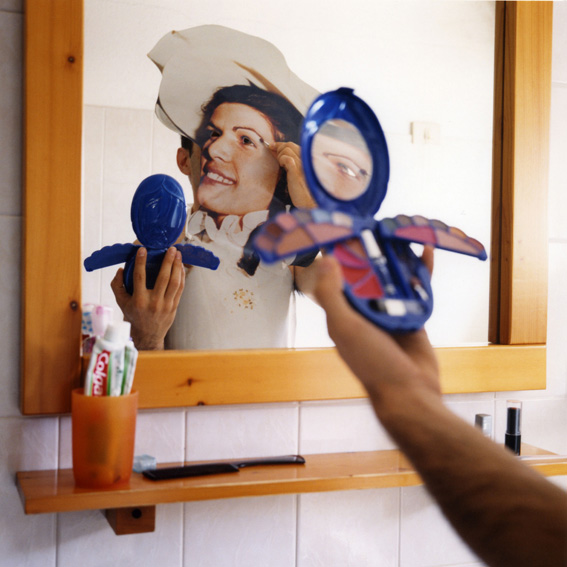
Cristian Chironi, a young sardinian artist (Nuoro, 1974), works on memory. One feels that, for a generation that seemed to have irredeemably lost its memory, this acquires a meaning of liberation and redemption. Childhood memories relating to the house, family, land, objects are constantly staked, affirmed and insisted on as sound anchorages of identity. The body is indeed the place where the fragment primarily fixes itself, according to a praxis that aims at declining it in a static and unchangeable image, in an iconic narrative and allegorical image. The artist’s memory sublimates itself to collective memory, starting from a sharing process that essentially goes through a sort of expiation, that is an earnest exposing of the self, a giving up of any prejudice, scheme and unquestionable category. The original trait in Chironi’s works is just this rewind process, performed by resetting his own identity and patiently re-building it according to an agenda of radical revision and self-analysis since his childhood. Chironi’s action acquires, in the accomplished post-modern time, a paradoxical, critical, opposing and provocative meaning, conveying values, concepts and ideals that seem to be obsolete and are rescued through their exemplary re-happening. From a picture, Chironi rebuilds and restores his mother’s image by means of an extremely patient procedure; from an enlargement of the original picture, he cuts and reassembles a model to wear. Giving up his appearance, the artist sew himself a new skin, he sticks his own memory and identity on, actually displaying it, performing an overturning between inner life and outward appearance. The painful act of sewing on the skin, that reminds of Gina Pane’s actions, primarily constitutes a linguistic paradigm and a communicative act. This is indeed why the body turns into a book for the same memory elsewhere, completely covered, as it is, with copies of the same picture. A picture that, like an echo, confirms and repeats, perpetuates and multiplies, while offering itself to the world, as serial memory and souvenir, that the artists ends up embodying. He transforms himself into it, re-wearing Lina’s real wedding dress, reaching the absolute identification, self-cancellation and shipwreck into his own origins.Within a general continuity, there are two distinct phases: on the one hand there is the ‘investiture’ sequence, the progressive gain of the new/old identity and, on the other hand, the sequence of the mise en scène of the mother’s daily gestures and situations that belong to one’s own memory. In this acceptation, even the objects the artist surrounds himself with acquire a signifying quality. The value of the work does not reside in the synthesis, but rather in its redundancy, in the overquotation that brings art itself back to the sphere of a collective and everyday reminiscence, with a continuous summing up that is a conscious and declarative act. (extracted from the text of Alfredo Sigolo)